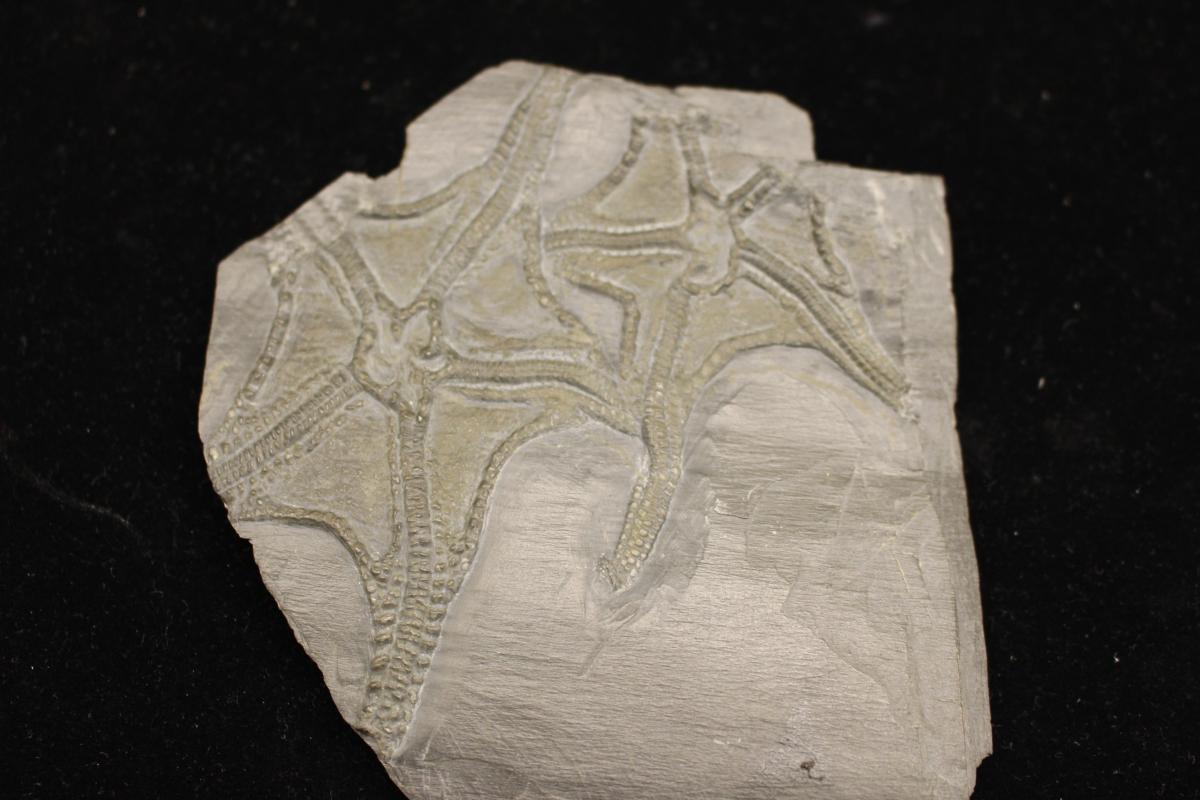I don’t always set out to trick you, honest. But this week, I totally did. When I took this photo I was all pleased with myself, and told my friend Jessica (the curator of the MCZ’s invertebrate collection) that it’d trick everyone. I was hoping that a lot of you would think that this critter was some kind of crinoid. And while I did get a fair share of crinoid responses, Dan Coleman was way too quick to see through the ruse. No one got genus species, but I think Dan comes closest to the win this week.

As you can see now, it’s not a crinoid at all but it is an echinoderm. Two echinoderms, actually. Meet Euzonosoma tischbeinianum, a type of webbed brittle star. I apologize for the lack of scale, I seem to have forgotten to include my trusty quarter. If memory serves, they were about 20 cm or so across. Although they superficially resemble starfish (better named sea stars), brittle stars are a distinct group of organisms. They do not have tube feet like their more famous cousins. Instead of crawling along a surface, brittle stars propel themselves through the water by whipping their often quite long arms. Brittle sea stars are pretty rare in the fossil record, because they are, well, brittle. They tend to fall apart pretty quickly after death. In addition, many species of living brittle stars favor deep water. If their extinct relatives did, too, that would also help to explain their scarcity since fossilization is far less likely to occur in the deeps than in shallow, calm waters.
Before I go, a funny thing kept happening when Jessica and I were pulling out drawers of Hunsrueck specimens—she kept sniffing them. Now, I love fossil smell as much as the next gal, but after a few sniffs I did start to wonder, so I asked Jessica what she was doing. Turns out, she was checking the fossils for a sulfur smell, which is a symptom of dreaded pyrite disease. Pyrite disease is actually pyrite oxidation. It occurs when pyritized fossils are exposed to high humidity. Pyrite (FeS2) plus water (H2O) plus oxygen (O2) yields ferrous sulfate (FeSO4), sulfuric acid (H2SO4), and sulfur dioxide (SO2). Ferrous oxide is a lot bulkier than pyrite. As the ferrous sulfate crystals grow, they cause the pyrite around them to crumble. To make matters worse, sulfuric acid is nasty stuff that can eat through anything, including the container and shelf in and upon which the fossils are held. The way to detect this condition early? Sulfur dioxide smells like rotten eggs.
There are a number of ways to treat pyrite disease if you can catch it in time, hence all the sniffing Jessica was doing (nothing detected in any specimens of note). The treatments are not always successful, however, and pyrite disease has wreaked absolute havoc in many collections. In days of yore, pyrite oxidation was thought to be an actual illness, because it seemed to spread through collections like a disease. The things you learn photographing fossils!
Are you a teacher and want to tell us about an amazing free resource? Do you have an idea for a Misconception Monday or other type of post? Have a fossil to share? See some good or bad examples of science communication lately? Drop me an email or shoot me a tweet @keeps3.

